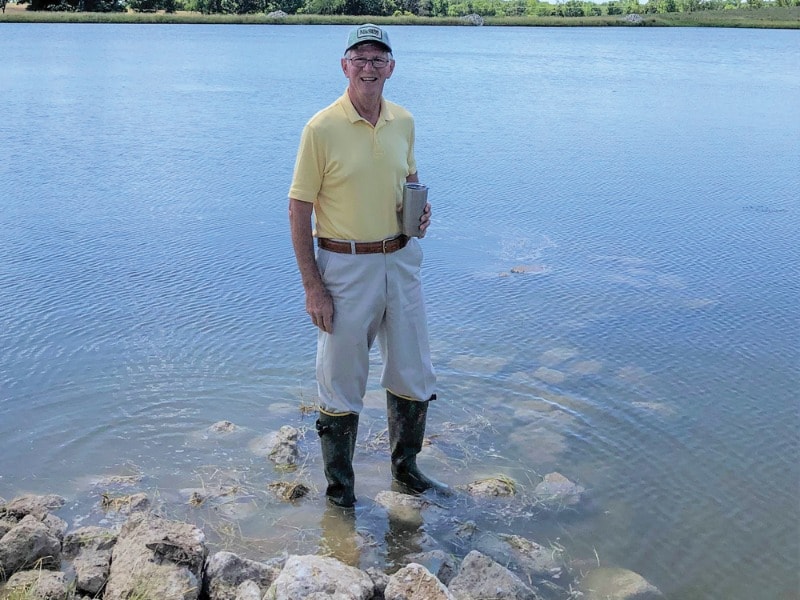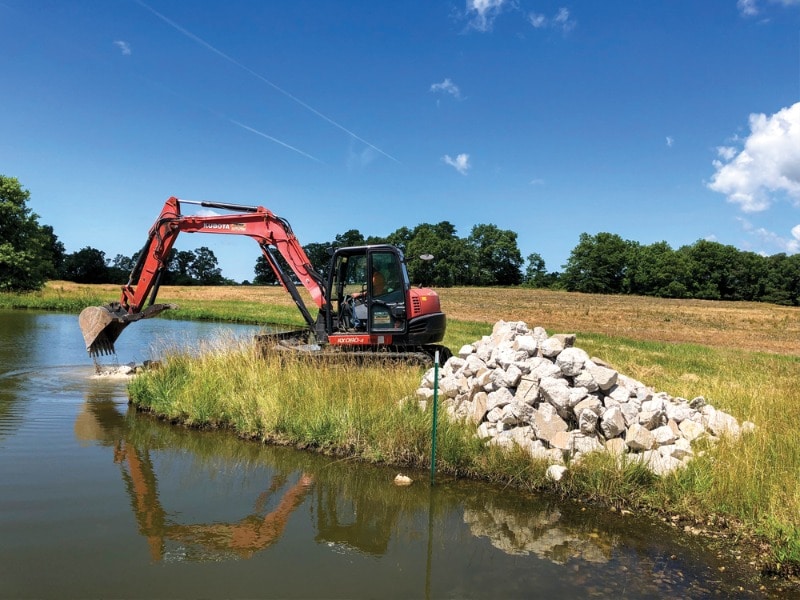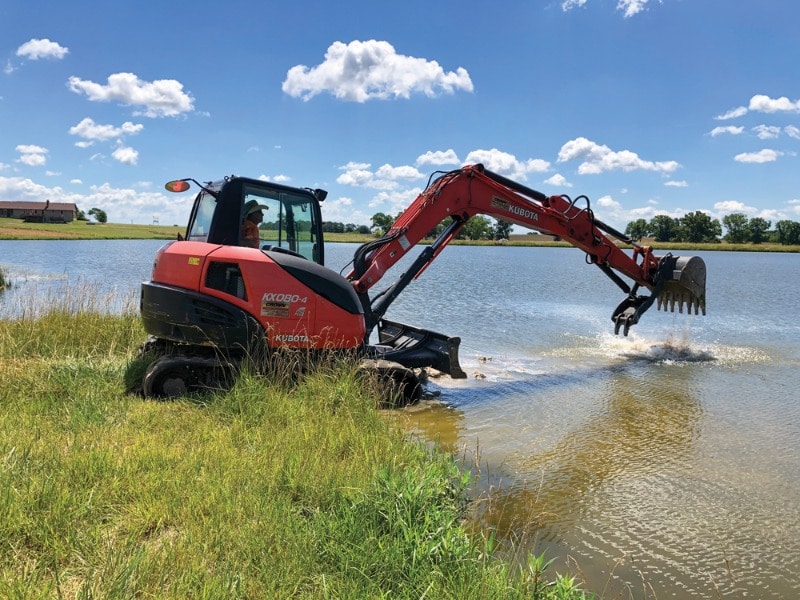Rocks for the Fish

Fishing for largemouth bass, in the watershed lakes around home, gets a fair amount of my attention each year – during spring, summer and early fall. There’s always a discussion of the need for more structure in the lakes. We’ve anchored a few Christmas trees and pieced together miscellaneous plastic structures through the years, but have never enjoyed much success with either. This year, we’ve come up with what may be the real deal – multiple underwater concrete dykes, extending from the shore out into the lake.
A close friend is a contractor, who replaces several parking lots each year and needs a place to go with the broken-up concrete. Part of his bid includes the cost of removing the old concrete from the site and hauling it out of town. So, I just volunteered to have a few loads delivered to one of the watershed lakes, at no charge.
My fishing buddy Dick Leeper and I started the process by driving ten steel posts around the lakeshore, each representing the location for a dump truck load of scrap concrete. As an old parking lot was demolished, the truck loads of concrete piled up around the lake – ten piles in

total.
By agreement, the cost burden was now on us to get the concrete into the water – to create the desired structure. We wanted each dyke just “under water” so as not to destroy the natural beauty of the lake; and we wanted a “hint” of rock at the shoreline to reveal the location of each dyke, from a boat or when walking the edge.
Simply pushing the scrap into the water with a skid loader would have been less expensive; but that would have just created a small pile of structure at the shoreline. Our idea was to use a track hoe (excavator) to pick up the rock and place it carefully into the water – to create as long of dykes as possible. In shallow water the dykes were 20-25 feet in length, but in deeper water barely ten feet. We also know that with a “long reach” excavator and additional loads of concrete, we could make the dykes much longer or thicker or with spurs on the side. The conservation department tells me that standing timber in a new lake will provide habitat for about 60 years. Who knows, these concrete dykes may last forever.

